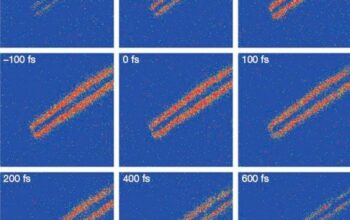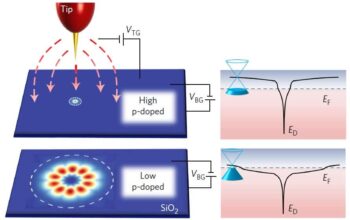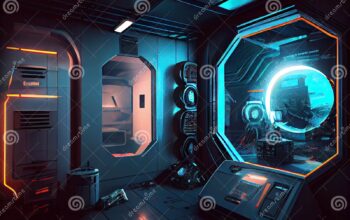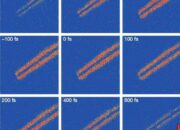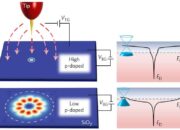Chemical origami represents a fascinating intersection of materials science, chemistry, and origami—a practice often dismissed as mere paper folding. However, the innovative concept of manipulating two-dimensional (2D) chemical precursors into three-dimensional (3D) structures illuminates new pathways in various fields, including nanotechnology, drug delivery systems, and soft robotics. This field exhibits a wealth of potential, not only for scientific applications but also for enhancing our understanding of geometrical transformations on the molecular level.
At the heart of chemical origami lies the paradigm shift from traditional methods of synthesis, which often rely on static arrangements of molecules. By embracing the dynamic processes involved in folding, chemists can harness the intrinsic properties of 2D materials, such as graphene or thin films, through strategic creases and folds. The essential mechanism involves localized deformation—which alters bond lengths and angles—facilitating an energetic pathway from a simpler, flat geometry to a complex three-dimensional form.
This chemical manipulation commences with the synthesis of precursor sheets tailored for folding. Researchers have elucidated methodologies to create flat polymeric films embedded with functional groups. These precursors are treated with stimuli, such as thermal activation or solvent-induced swelling, which prompt a transformation into the desired 3D conformation. The efficacy of such methods relies heavily on the careful orchestration of the physical and chemical properties of the materials involved.
The diverse array of materials employed in chemical origami is one of its most intriguing features. Innovations have been made using polymers, metals, and even biological materials, exemplifying the versatility of this approach. Polymeric materials, notably those that are thermoresponsive or pH-responsive, stand out due to their ability to switch states in response to environmental cues, enabling the precise control of the folding process. Correspondingly, metal-based structures can be formed through techniques like electroplating, expanding the horizons of both structural stability and functionality.
A prominent application of chemical origami is observed in the realm of drug delivery systems. By crafting intricate structures capable of releasing therapeutic agents in a controlled manner, drug delivery systems can achieve targeted administration. These novel designs, inspired by origami, can navigate through biological environments, deploying their cargo only when encountering specific stimuli (such as changes in pH or temperature). This precise targeting mitigates side effects and enhances therapeutic efficacy—hallmarks of an evolving pharmaceutical approach.
Moreover, chemical origami has been instrumental in the advancement of soft robotics. Soft robots, characterized by their compliant structures, benefit enormously from the adaptive capabilities afforded by origami-inspired designs. These robots, capable of significant shape changes, can mimic biological organisms, allowing them to maneuver through complex environments and perform intricate tasks. The interplay between chemical properties and mechanical dynamics forms the foundation of these innovations, pivoting towards softer, more flexible robotic solutions suited for delicate applications such as minimally invasive surgeries.
The emergence of 3D structures derived from 2D origins challenges preconceived notions of structural assembly. For instance, the applications extend beyond utilitarian functions to artistic expressions, as scientists design aesthetically pleasing configurations that engage both the viewer’s curiosity and their scientific imagination. The artworks made through chemical origami serve as a bridge between science and art, prompting interdisciplinary collaboration and broader public interest in scientific endeavors.
A critical perspective within this transformative field is the exploration of self-assembly processes. Identifying and understanding the underlying principles that govern the spontaneous folding of certain shapes can yield insights into natural processes, akin to how proteins fold into complex configurations. This nexus of inspiration may foster biomimicry, where scientists replicate such mechanisms to develop new materials and systems that embody similar efficiencies and adaptabilities found in nature.
Despite its potential, challenges remain ever-present. The predictability and reliability of folding mechanisms require robust computational models and experimental validation to ensure reproducibility. Furthermore, as chemical origami often oscillates between science and engineering, interdisciplinary communication is necessary for the seamless integration of ideas across fields. Only through collaborative efforts can the full spectrum of chemical origami be explored.
As this intriguing domain continues to unfold, the coalescence of advanced computational techniques with the innate properties of materials is warranted. Sophisticated simulations can assist researchers in exploring design spaces and predicting the outcomes of various folding configurations. Through these integrative approaches, a deeper understanding of the principles governing chemical origami will emerge, paving the way for innovative applications.
In conclusion, chemical origami embodies a compelling nexus where science meets art, engineering dances with biology, and rigid geometries transmute into dynamic forms. Its burgeoning promise stretches beyond conventional chemical synthesis, ushering in a new era of material design. As our understanding deepens and our capabilities expand, the implications of this transformative approach will ripple across diverse domains, ultimately enhancing our capacity to interpret and manipulate the world around us.

